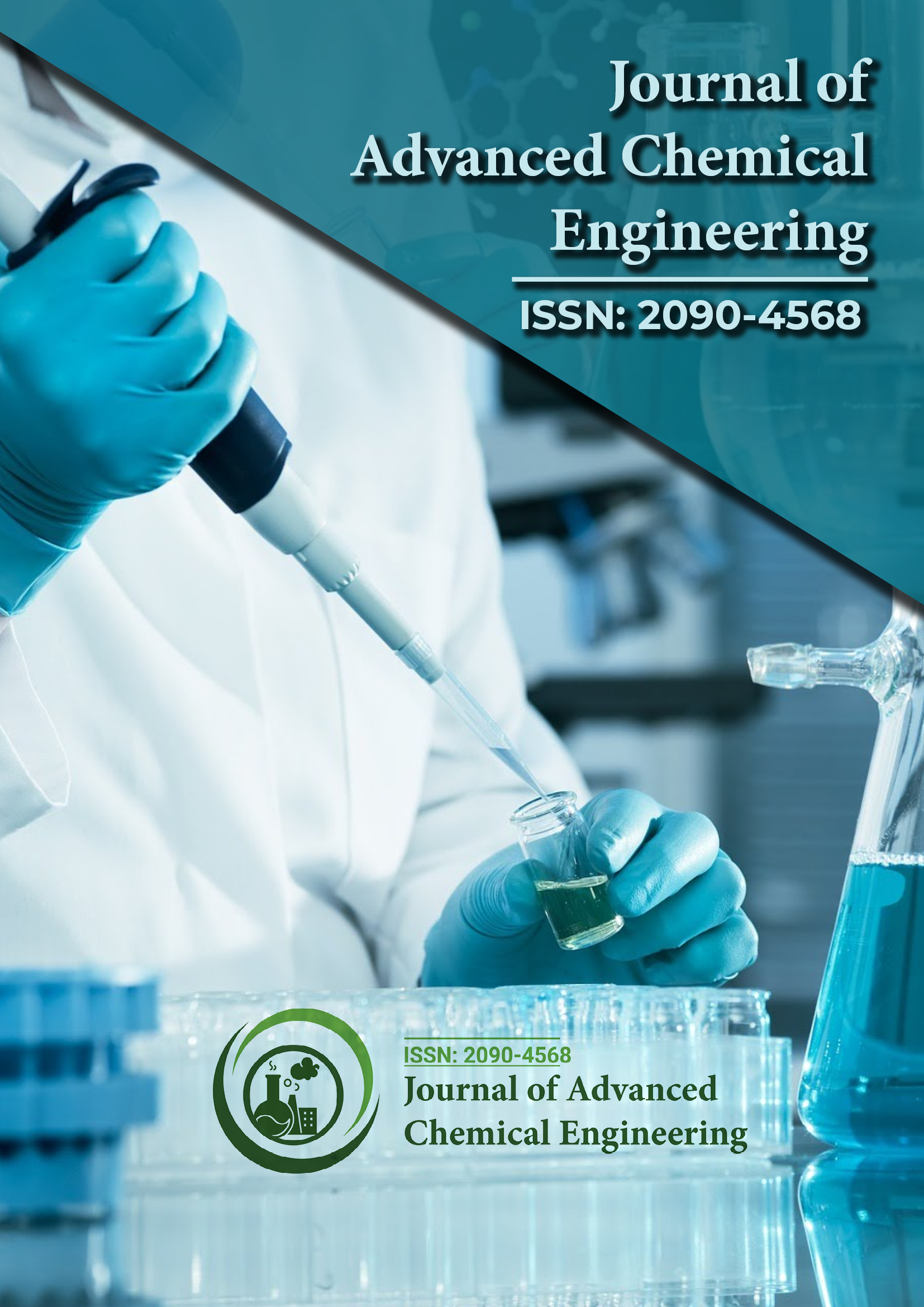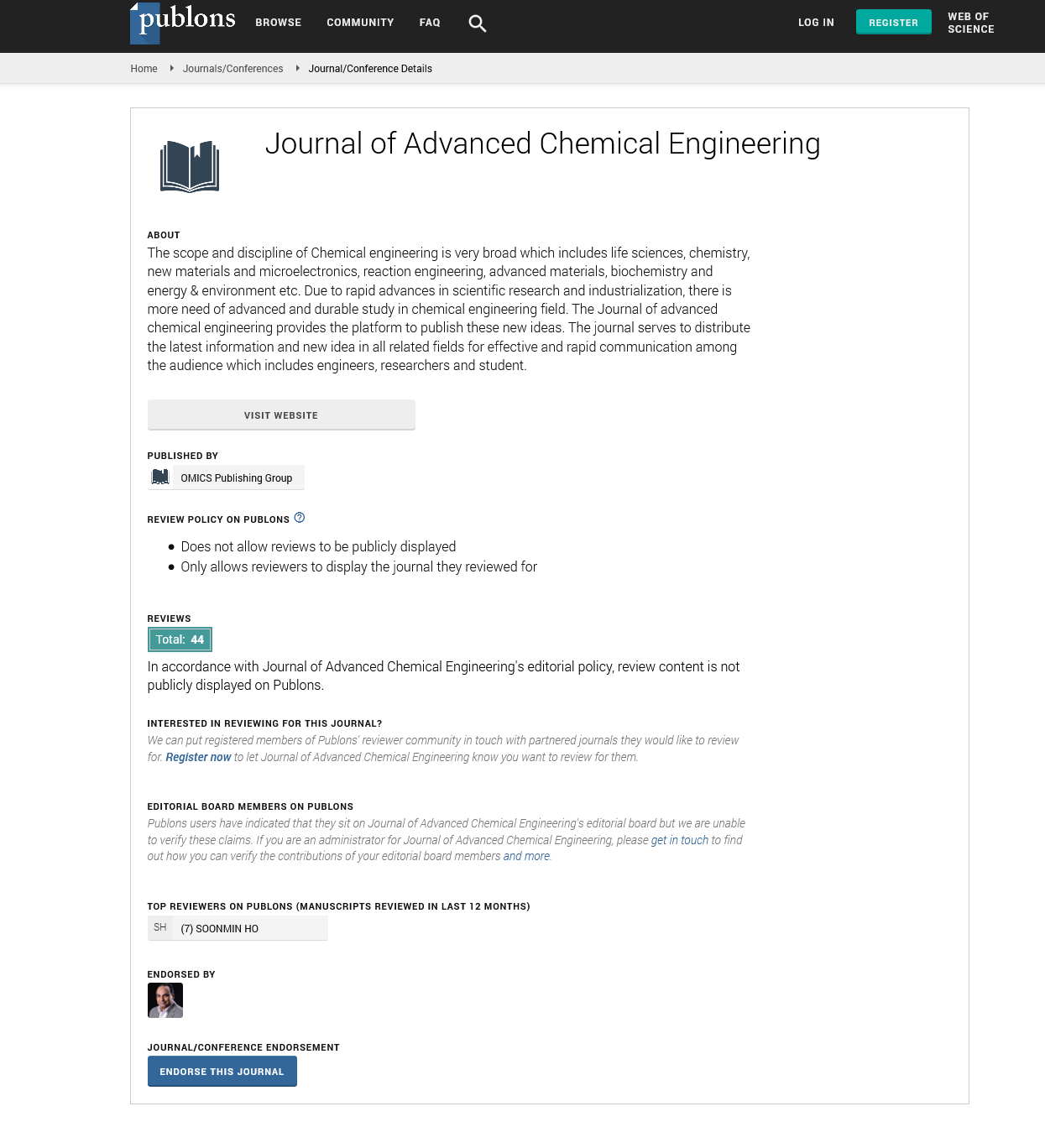Indexed In
- Open J Gate
- Genamics JournalSeek
- Smithers Rapra
- RefSeek
- Directory of Research Journal Indexing (DRJI)
- Hamdard University
- EBSCO A-Z
- OCLC- WorldCat
- Scholarsteer
- Publons
- Geneva Foundation for Medical Education and Research
- Google Scholar
Useful Links
Share This Page
Journal Flyer

Open Access Journals
- Agri and Aquaculture
- Biochemistry
- Bioinformatics & Systems Biology
- Business & Management
- Chemistry
- Clinical Sciences
- Engineering
- Food & Nutrition
- General Science
- Genetics & Molecular Biology
- Immunology & Microbiology
- Medical Sciences
- Neuroscience & Psychology
- Nursing & Health Care
- Pharmaceutical Sciences
Commentary - (2025) Volume 15, Issue 2
Membrane Technologies Shaping the Future of Clean Water and Desalination
Hiroshi Tanaka*Received: 30-May-2025, Manuscript No. ACE-25-29804; Editor assigned: 02-Jun-2025, Pre QC No. ACE-25-29804 (PQ); Reviewed: 16-Jun-2025, QC No. ACE-25-29804 ; Revised: 23-Jun-2025, Manuscript No. ACE-25-29804 (R); Published: 30-Jun-2025, DOI: 10.35248/2090-4568.25.15.365
Description
Water scarcity has become one of the most pressing issues of the 21st century, with climate change, population growth, and industrialization intensifying the demand for clean, safe, and sustainable water sources. As freshwater resources decline, chemical engineers are playing a central role in developing innovative solutions to secure water for drinking, agriculture, and industry. Among these solutions, membrane technologies for desalination and water reuse have emerged as a transformative approach that aligns with both environmental sustainability and human needs. Membranes, as selective barriers, allow certain molecules to pass while blocking others, and their integration into water treatment processes has completely changed the landscape of clean water production.
The earliest forms of membrane technology were limited by poor selectivity and low throughput, but decades of chemical engineering research have brought significant advances. Reverse Osmosis (RO) has become the dominant method of desalination worldwide, converting seawater and brackish water into potable water by applying high pressure to push water molecules through semi-permeable membranes while leaving salts and impurities behind. The remarkable efficiency of modern RO membranes lies in their thin-film composite structures, which combine a dense polyamide active layer with a porous support for mechanical strength. These membranes can achieve salt rejection rates exceeding 99%, making them suitable for municipal and industrial water supply.
However, reverse osmosis is not without its challenges. Energy consumption is a major concern, as the high pressures required translate into significant electricity demand, particularly in seawater desalination plants. To address this, chemical engineers are working on energy recovery devices and hybrid desalination systems that combine RO with other processes like forward osmosis or membrane distillation. These approaches can reduce the energy burden while maintaining water quality. Moreover, fouling and scaling of membranes remain persistent obstacles. Fouling occurs when organic matter, microorganisms, or suspended solids accumulate on the membrane surface, reducing permeability and increasing maintenance costs. Scaling involves the precipitation of dissolved salts, which can clog the pores and impair performance. Research into advanced antifouling coatings, hydrophilic modifications, and self-cleaning membranes is helping mitigate these issues, improving reliability and extending the lifespan of membranes.
Beyond desalination, membranes are proving indispensable in wastewater treatment and reuse. With urban centers generating billions of liters of wastewater daily, reusing treated water has become essential to meet rising demand. Membrane Bioreactors (MBRs) integrate biological treatment with ultrafiltration or microfiltration membranes, producing effluent of high quality suitable for irrigation, industrial reuse, or even potable applications after further purification. These systems are compact, efficient, and increasingly cost-effective, making them attractive for both municipal and industrial applications.
Similarly, nanofiltration membranes offer selective removal of divalent and multivalent salts, organic molecules, and heavy metals, making them particularly useful in industries such as textiles, pharmaceuticals, and food processing.
Another frontier in membrane technology is the incorporation of nanomaterials to enhance performance. Graphene oxide, carbon nanotubes, and metal-organic frameworks have been integrated into membrane matrices to improve permeability, mechanical strength, and selectivity. Graphene oxide, for instance, provides pathways for rapid water transport while maintaining excellent salt rejection properties. These nanostructured membranes also show improved resistance to fouling and chemical degradation, paving the way for longer-lasting and more efficient systems. Electrospinning techniques have enabled the fabrication of nanofiber membranes with high porosity and tunable pore size, offering additional control over separation performance.
Citation: Tanaka H (2025). Membrane Technologies Shaping the Future of Clean Water and Desalination. Adv Chem Eng. 15:365.
Copyright: © 2025 Tanaka H. This is an open-access article distributed under the terms of the Creative Commons Attribution License, which permits unrestricted use, distribution, and reproduction in any medium, provided the original author and source are credited.

